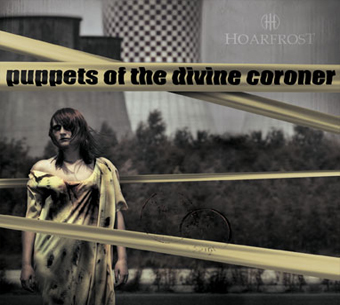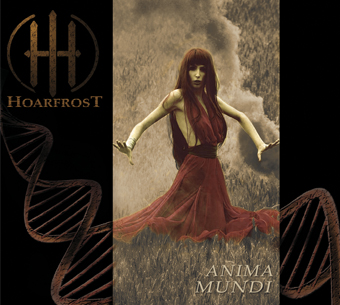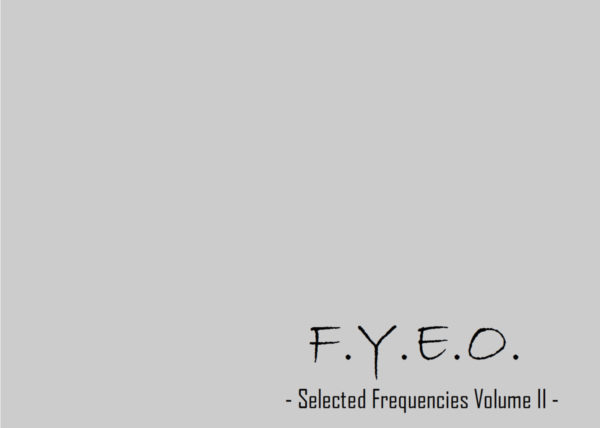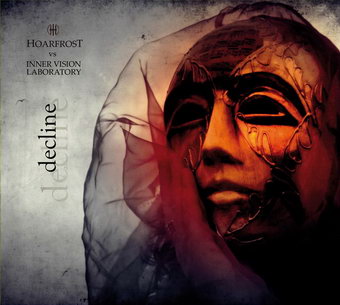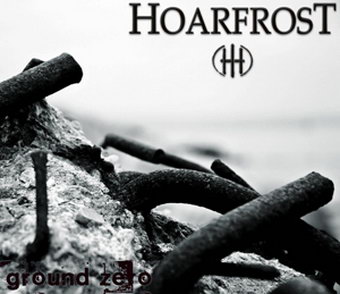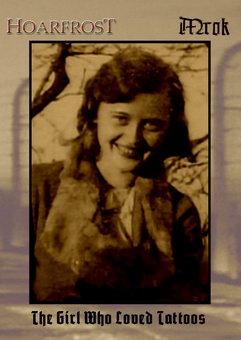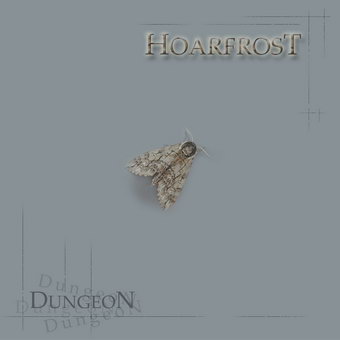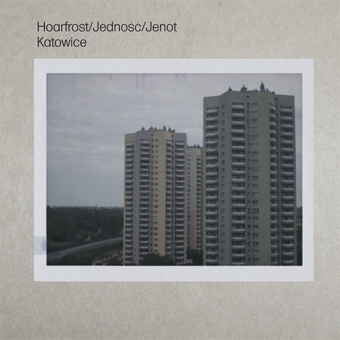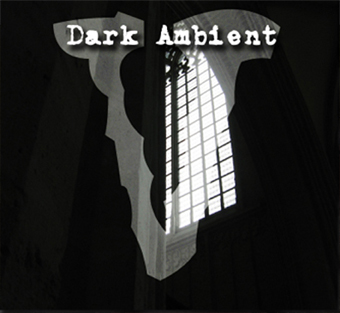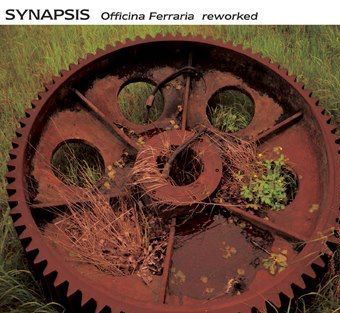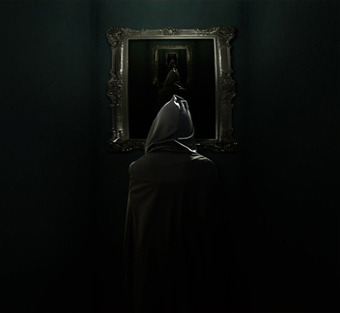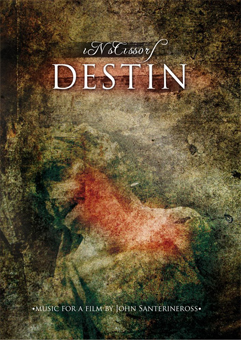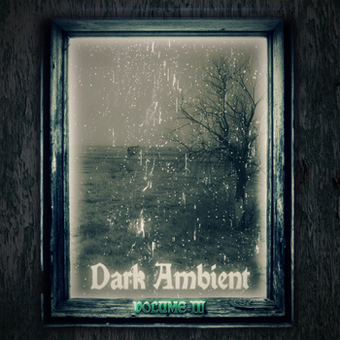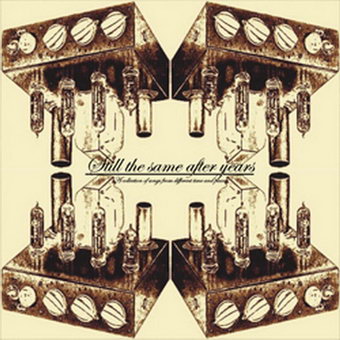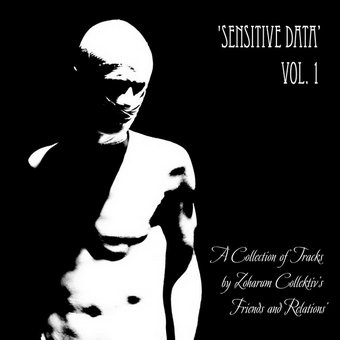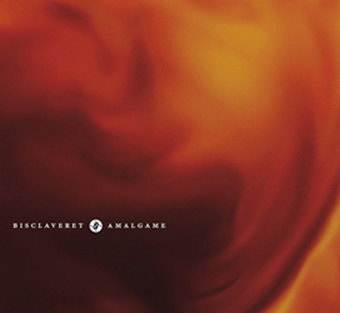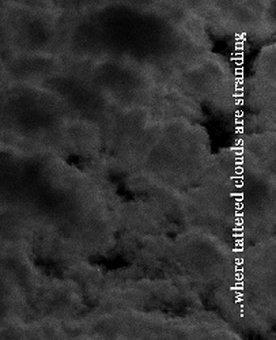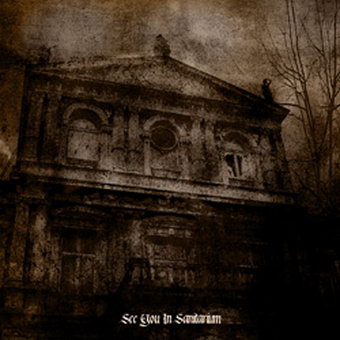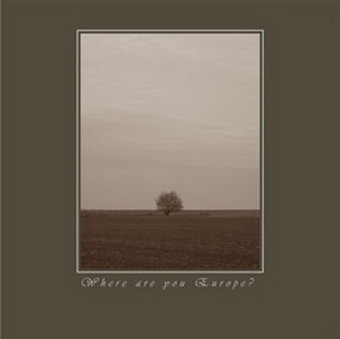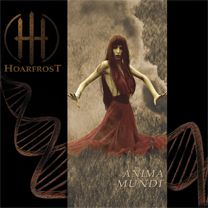 Hoarfrost – Anima Mundi
Hoarfrost – Anima Mundi
1. Ages of Gaia
2. Perception Primordial
3. Mimesis
4. Refracted In Illusion
5. In Hopeless Mazes
6. Medeaeternum
Label: Reverse Alignment – RA-27
Date: 17 August 2016
Format: CD
Anima Mundi – the world soul. Sometimes interpreted as the mythical Gaia or the mother of earth and all it’s life and forms. The superorganism of the planet.
With their fourth album, Hoarfrost explores the philosophical view of mother earth as the caring ancient goddess and the possibility that she’s actually are a Medea that will deceive and betray humanity, making us faithless and deprived of our will to survive. And in the end, facing total collapse.
On „Anima Mundi”, Hoarfrost collaborates with Katarzyna Bromirska from PERCIVAL SCHUTTENBACH (cello), Valdi Rzeszut from RATATAM (guitar), Dawid Chrapla from SYNAPSIS and Tomasz Twardawa from GENETIC TRANSMISSION (noise structures) bringing us dark ambient industrialism.
REVIEWS:
Terra Relicta magazine (US)
Anima Mundi is an unique experience. Hoarfrost have taken their previous sounds and increased the intensity in every way. Anima Mundi is the first album from Hoarfrost in over five years. Hoarfrost released their first two albums, Puppets Of The Divine Coroner and Ground Zero, as well as a split with Inner Vision Laboratory through Zoharum. They brought a unique combination of dark ambient, industrial noise, and operatic vocals. Now they return with Anima Mundi, their first release on Reverse Alignment.
Anima Mundi has been a long time in the making. Hoarfrost hit a brick wall several years back, induced by the death of their dear friend Amelia, who suddenly passed on. Amelia had been responsible for the album art on most of the Hoarfrost releases. Hoarfrost took some time to mourn and rebound. With the help of some special guest collaborators, they brought the project back into focus. Now they have dedicated Anima Mundi to their friend Amelia.
Hoarfrost had previously been known for the unique combination of bleak apocalyptic soundscapes, which barely touched the realms of musicality, and the female vocals, which added a truly unique touch. Their full length debut, Ground Zero, was a wrenching experience, evoking the moods and sounds of a massive metropolitan disaster. On Puppets Of The Divine Coroner, Hoarfrost largely followed the framework of Ground Zero. Both albums attracted attention and praise from plenty of fans and reviewers across the world.
Anima Mundi is quite an unusual album. The mood is set in a masterful way. Building off all the sounds Hoarfrost previously used, but moving much further into uncharted territories. Anima Mundi presents a world which appears to be dying or dead. But the difference this time is that we are witnessing this through the lens of the anima mundi, the world spirit, the devastatingly beautiful yet vicious Mother Earth. Mother Earth shows us two vastly different faces. Stare into the northern sky, watching the Aurora Borealis, amaze in the beauty, but remember there are violent earthquakes which rip through California, tsunamis obliterate Japanese shorelines, the world is stronger than humanity, she gives and takes life with no shame or regret.
The talents of several guest musicians not only spice up this release, but they transform it into something totally different from the previous Hoarfrost outings. Anima Mundi is significantly more musical, in every way from the operatic female vocals to the somber cello arrangements. Hoarfrost recruited the talents of several guest musicians, including: Valdi Rzeszut from Ratatam, whose guitar parts are featured on tracks „Refracted In Illusion” and „In Hopeless Mazes”, as well as Katarzyna Bromirska from Percival Schuttenbach, whose cello can be heard throughout the entire album. These cello parts give the album an even flow and hold the listener within the musical context easily, without going off into long periods of minimal soundscape. While the guitars can be considered part of the more chaotic aspects of the album.
Hoarfrost took a real gamble on this release, relying on the open-minded nature of the majority of fans who listen to these dark ambient/industrial genres. Anima Mundi brilliantly encapsulates the dichotomy between the peaceful and chaotic forces present on Earth. These concepts are personified through two strong females, Gaia and Medeae. Gaia, the goddess, the mother Earth, can be best represented in the beautiful cello arrangements, but also in the rumbling noises found throughout the album. Whereas we can hear Medeae’s presence most explicitly through some of the more sinister sounding vocal sections. In fact, the vocals really give us the best understanding of the shifts in emotions presented on Anima Mundi. Sometimes the vocals are beautiful, well timed operatic sections, while on other tracks they become purposely disjointed, at times chaotic. On „Medeaeternum” the vocals become downright vicious, moving effortlessly between this operatic sound and violently passionate screams of rage.
Anima Mundi is sure to be a challenging release for many listeners, but that shouldn’t stop anyone from giving it a listen. There is a little something here for all sorts of musical tastes: death industrial, power electronics, operatic vocals, dark ambient soundscapes, classical cellos. The experimental nature of this release, steeped in an obvious darkness is reminiscent of something we would hear on some Cold Meat Industry release. I would highly recommend this to listeners who love to hear musicians step outside the normality of so much modern music. There is little here that could be directly compared to anything else out there. Hoarfrost have presented their most unique work to date. While it won’t be for every one, those who enjoy Anima Mundi are likely to fall in love with it.
Written by: Michael
Rating: 8/10
Dark Entries magazine (NL)
Halloween staat voor de deur, en moest je nog op zoek zijn naar de geschikte soundtrack voor je aanstaande Samhain (om ons in occulte sferen te begeven, want deze ademen Anima Mundi een en al uit) feestje op te luisteren, staak dan meteen het zoeken, dit is immers de plaat die je moet hebben!
Het beangstigende, vervormde koorgezang in het begin van opener ‘Ages Of Gaia’ maakt meteen klaar en duidelijk dat angstaanjagend uitgedoste zielen door de straten dwalen, die niet tevreden zijn met enkel maar een handjevol snoep. Doe alvast dat extra slot op de deur, het zal de komende 50 minuten geen overbodige luxe zijn.
Het Poolse dark ambient project Hoarfrost laat na 5 jaar nog eens van zich horen middels een langspeler, deze keer op het Zweedse Reverse Alignment, en niet meer zoals de eerste drie platen op het Poolse Zoharum label.
We zijn blij om te zien dat de Poolse experimentele zangeres Hekte Zaren terug van de partij is, ze maakt immers sinds de opnames van Hoarfrosts vorige plaat Puppets Of The Divine Corner (2011), mee deel uit van het project, we kunnen het alleen maar toejuichen want deze dame is er om gekend extreme occulte vocale experimenten te creëren, kortom de gedroomde aanvulling bij de dark ambient van Hoarfrost.
Op Anima Mundi werden nog meerdere gasten uitgenodigd om het dark ambient tapijt van Hoarfrost in te kleuren, zo ontwaren we Katarzyna Bromirska op cello, Valdi Rzeszut op gitaar en kruiden Dawid Chrapla en Tomasz Twardawa (Genetic Transmission) het geheel met allerhande geluidjes.
Dat je met een titel als Anima Mundi ook spiritueel niet op je honger blijft zal menigeen al wel duidelijk zijn. Animus Mundi is immers de Latijnse benaming van de ‘Wereldziel’, oftewel de etherische geest waarvan volgens sommige antieke filosofen alles in de wereld doordrongen zou zijn. De ‘animus mundi’ zou alle dingen van welke materie ook bezielen, net zoals verondersteld werd dat de ziel een mens ‘animeerde’. Deze Animus Mundi werd soms geïnterpreteerd als de mythische Gaia, de oermoeder, die ontstond uit de Chaos aan het begin der dingen.
Anima Mundi, de plaat, wil de filosofische opvatting onderzoeken die moeder aarde ziet als de verzorgende oude godin en eveneens de mogelijkheid dat ze eigenlijk zoals een Medea de mensheid zal bedriegen en verraden, wat ons ongelovig maakt en ons beroofd van onze wil om te overleven. Om ten slotte, geconfronteerd te worden met de totale ineenstorting.
Kan het nog apocalyptischer? Inderdaad, wij dachten ook van niet! De muzikale omlijsting die dark ambient combineert met neoklassieke klanken, creepy geluidjes, snaarinstrumenten en de vocale capriolen vormen dan ook een gedroomde apocalyptische potpourri, die een doordringende angstbries doorheen de woonkamer blaast.
Let wel, dit is een zware maaltijd, geen vlug tussendoortje, neem dus je tijd om deze plaat helemaal tot je (onder)bewustzijn door te laten dringen.
Gaandeweg zal dit heidens ritueel immers meer en meer geheimen prijsgeven, een ontdekkingsreis die zeker en vast de moeite waard is om te ondernemen.
De muzikale omlijsting heeft ons nog niet volledig over de streep getrokken, maar eensgezind zijn we over de meerwaarde van zangeres (al is deze term te beperkend voor deze artieste) Hekte Zaren. Haar vocale bijdragen doen ons spontaan denken aan onze favoriete heks, Diamanda Galás. Hoewel deze laatste niet te evenaren valt, komen de jammerklachten van Zaren toch soms akelig dicht in de buurt, zoals op ‘Perception Primordial’, of de grandioze afsluiter ‘Medeaeternum’, op dit laatste nummer komen alle ingrediënten samen in een orgastisch samenspel, dat een dik kwartier lang de poorten van de hel wagenwijd opentrekt.
Praefuscus Ferrum magazine (Esp)
Upon hearing Anima Mundi, several things might come to mind depending on the level of attunement with it is possessed at that moment. If one is thinking of the technical side of craft of music making itself, the origin of the different artifacts and tropes within the structures of organised sound will come to mind. On the emotional and psychological sides of the experience, this is the kind of music that must needs be voluntarily sought, not rationally but in an opening of the senses to it. Such a description may sounds sketchy and vague. What it entails is a mental working through the two basic dimensions of music: the horizontal and vertical, the momentary whole and the narrative development. It will need several trials, especially for those unaccustomed to letting go, but Anima Mundi will reveal a very interesting path in and out.
The title that Hoarfroast has chosen for this album is indicative of the nature of a music that asks for the correct method of experience in a connection with what some would call our primitive self. But there is no such thing as a primitive side, but the metaphor itself is useful and has a certain meaning. In truth, where we come from, that is, our past, and what we are now, simply constitute our whole at this present moment. Hence, in answering the call of the soul of the world and the hidden part of ourselves, which answers to the motions of the spheres more than we would like to admit, we are engaging in some retrograde motion or ritual but rather understanding a different aspect of our nature through our relation to Nature.
A prominent element in Hoarfrost’s Anima Mundi is the female voice that haunts the mind and chills the ear, sending a cold finger sliding down the back of our spines. The noise structures produced through programming sometimes remind of a more varied and elaborate take on the compelling work of Endvra in Black Eden. Hoarfrost demonstrates a patience shared by that dark ambient, but it also provides an incredible amount of variety masterfully fused into their overarching concept. It therefore boasts of the strengths of both worlds, the deep ambient rooted in repetition and the classical-like experimentation of sounds. Hoarfroast’s greatest triumph in Anima Mundi is its successful channeling of all these into one great purpose that extends far beyond the conceptual and that is shown in the direction of the manifold aspects of its music. From her soft whispers to its terrifying and painful screech in ‘Mimesis’, from the cello that smells of tree wounds and tastes of bark to the chiming which alludes to the music of the spheres and the flow of what some call living energy. These are not, like in most other places, to be taken as enticing distractions, but as meaningful and completely functional parts of a flowing and evolving idea.
Anima Mundi appears non-threatening yet hides danger, however unbeknownst it may be to its own creator. To that, only it can and will answer to inner questioning. Such a work will be “enjoyed” by some, entirely ungraspable to the majority, perceived by those who happen to be in tune with its particular intention through unconscious realisation, understood by a few, but travelled through in full awareness by only a handful. This writing has not the intention of deterring the listener, but of signaling what have now become unconventional ways to those who would brave lonely mountains and old forests both within and without. To venture down the path guided by Hoarfrost is to walk under the moon.
Darknation magazine (PL)
Tym razem Rafał Kopeć tak dla urozmaicenia postanowił wydać album nakładem Szwedów z Reverse Alignment, ale album jest dostępny w sklepie www.alchembria.pl który należy do macierzystej wytwórni Zoharum. Na okładce od razu poznałem piękną „znajomą” z fejsa czyli Paulinę „Selene” Mieczkowską którą możecie zobaczyć także na klipie do utworu „Refracted In Illusion”.
Od pierwszego mojego spaceru z „Machina Mundi” od razu byłem na tak. Lubię ponure i trochę szalone historię a tutaj każdy utwór przynosi nowe doznania. Dużą rolę odgrywa tutaj wokal Hekte Zaren, która atakuje szalony wokalizami, świetnie opowiadając te wszystkie stare i nawiedzone historie. Drugi ważny element to partie wiolonczeli autorstwa Katarzyna Bromirskiej (Percival Schuttenbach.) Dźwięk wiolonczeli nadał muzyce wyrafinowania i kunsztu. Dużo smutku kreują jej dźwięki i bez jej partii muzyka dużo by straciła na swym ponurym pogańskim kimacie. Na płycie możemy usłyszeć jeszcze trzech gości – Dawid Chrapla (Synapsis), Tomasz Twardawa z legendarnego projektu Genetic Transmission oraz Valdi Rzeszut (Ratatam). Dwaj pierwsi panowie odpowiednio celnie odcisnęli swoje hałaśliwe industrialne piętno. Natomiast Valdi zagrał na gitarze. Całość fajnie i co ważne bez przesytu zaaranżował i okrasił ambientowo-indstrustrialnym podkładem Rafał Kopeć. Atmosfera w każdym utworze jest na odpowiednim poziome a ostatni prawie siedemnastominutowy kolos odpowiednio dopełnił całość.
Płyty słucha się z dużą przyjemnością, nie jest to raczej muzyka do słuchanie we dwoje w sypialni ale samotności wchodzi bez problemu. Bardzo ciekawy i odważy album, gdyby kiedykolwiek Hoarfrost w takim składzie zagrał koncert to wyroby było się wybrać. Minął rok a ja co jakiś czas włączam „Machina Mundi”. Czy to nie jest wystarczająca rekomendacja w czasach gdy tak wiele fajnych płyt odkładamy po paru przesłuchaniach na półkę? Czekam na więcej!
MITHRA! Templezine (FR)
Procédons à une présentation de rigueur pour ceux qui ne seraient pas familiers avec Hoarfrost. Anima Mundi est le quatrième album Hoarfrost, qui a travaillé à deux reprises avec Inner Vision Laboratory, et cela à l’occasion d’un album collaboratif et d’un split. Cette nouvelle production fait office de première sortie sur le label suédois Reverse Alignment – les autres albums ont été publiés chez les polonais de Zoharum. Pour cet album Rafal K s’est entouré d’Hekte Zaren, une vocaliste ayant participé à des projets ou à des groupes comme Adaestuo, Hexenwolf, Medico Peste, Gnaw Their Tongues, etc. Mais, aussi de Tomasz Twardawa (Genetic Transmission) et de Dawid Chrapla qui assurent la charpente noise/industrial d’Anima Mundi, d’une violoncelliste en la personne de Katarzyna Bromirska (Percival Schuttenbach), et enfin on note la présence d’un guitariste.
Cet album, Anima Mundi – terme qui signifie « âme du monde » et qui fait intervenir une idée de double nature – est littéralement pris en étau entre deux figures mythologiques, celle de Gaïa sur la bien nommée Ages of Gaia, la piste d’ouverture, et celle de Médée sur Medeaeternum, la dernière. La première de ces figures, Gaïa, qui est évoquée dans la Théogonie d’Hésiode, est une déesse primordiale, la déesse mère, elle est perçue comme pouvant être la source créatrice d’une harmonieuse beauté, tout comme celle du chaos originel, alors que celle de Médée, qui est une magicienne, est un personnage important du cycle des Argonautes ; selon les versions de son mythe elle y est, ou non, coupable d’un infanticide, par exemple dans la tragédie d’Euripide elle commet cet acte. Il était nécessaire de brosser ce tableau, car les entités évoquées ici sont intimement liées aux matériaux sonores, au point où ces derniers semblent leurs donner une incarnation, une vie, dans une « scénographie » poétique qui invite à de multiples interprétations.
Anima Mundi donne plutôt la sensation d’être à un long morceau qui serait découpé en plusieurs séquences ; Il n’est pourtant pas non plus l’enchaînement de pistes identiques, non, elles sont caractérisées par des éléments qui les rendent uniques, comme par exemple sur In Hopeless Mazes qui laisse entendre une guitare électrique (cette composition n’est malheureusement pas la meilleure de l’album…).
Rafal K avec cet album a, donc, fait le choix de proposer un dark ambient en perpétuel mouvement, et animé de forces antagonistes. Ce qui est en concordance avec le titre de l’album. On retrouve cette idée dans la mise scène d’un violoncelle organique et chaleureux , et de structures post-industrielles, qui entretiennent des rapports complexes fait de répulsions et d’attirances. L’ombre d’une possible symbiose plane tout autant sur ces compostions que celle d’un définitif divorce…
Cette situation inextricable et inévitable trouve son expression la plus totale dans la performance à la dimension souvent opératique de Hekte Zaren, quelque part entre Alzbeth (The Moon Lay Hidden Beneath A Cloud) et Diamanda Galas : ses chuchotements, ses hurlements, ses vocalises déformées, ses pleurs, sont comme les milles visages d’une contradiction qui semble nous condamner à un sort tragique.
Par ses références mythologiques, l’intense tension qui s’y agite, Anima Mundi se révèle être pensé dans les moindres détails. Sa construction invite clairement à chercher des clefs permettant d’émettre des interprétations. À quelle figure Hekte Zaren prête-t-elle sa voix : Gaïa en souffrance, Médée, ou incarne-t-elle l’Anima mundi ? Ces cordes qui dansent sur les architectures bruitistes est-ce Gaïa ? Peut-on rapprocher les éléments post-industriels -composés en partie de signaux émanant de machineries futuristes – de Médée ? D’autre part, cet assemblage renvoie à un ensemble, à un réseau, de questions philosophiques qui se tissent dans la relation entre science et nature, cette dernière et l’art, etc.
Ambitieux, complexe, Anima Mundi prend un visage unique dans la discographie d’Hoarfrost, grâce à sa façon inimitable, hors des sentiers battus, de retranscrire la sensation de vertige, le frisson qui nous parcourt, face à la convergence technoscientifique (convergence des nanotechnologies, biotechnologies, technologies de l’information et des sciences cognitives) qui ouvre des portes insoupçonnées d’évolution. Il serait bien regrettable de passer à côté…
Santasangre magazine (PL)
I wouldn’t say I am a diehard Hoarfrost fan, but I definitely appreciate Rafal’s idea of music. He started his activity almost ten years ago with an industrial dark ambient sound, strongly influenced by the place where he lives (as well as I, since we both come from Upper Silesia, the most industrialized region of Poland), not that far from other “neighbouring” projects such as Moan or Dead Factory. With time and with each new release he began to experiment with other ambient subgenres, moving the centre of gravity from abandoned mines, steel mills and factories to something less obvious, but more spiritual. I daresay that “Anima Mundi” is his best work up to this moment.
It has been released by the interesting Swedish label Reverse Alignment on CD in 300 copies. And if you’re expecting music of rusty machines decaying in a post-industrial environment, you can easily forget about it. Only echoes of these remain, present in the occasional metal clangs scattered all over the wasteland. Some of these, and the other noises were provided by the guys from Genetic Transmission and Synapsis. Rafal also invited a guitarist and a cellist to enrich the soulless and synthetic structure with live instruments. And what’s more important, once again he works with Hekte Zaren, a female experimental vocalist related to the black metal scene. All this might give you a general idea of “Anima Mundi”. It’s strongly influenced by neoclassical forms and – luckily – because of its lack of pompousness and bombastic tendencies we can consider it as dark ambient chamber music. It also has quite an illustrative aspect, that would rather fit a theatrical play than a movie. Hekte Zaren screams, cries, sings in an opera manner, whispers tenderly. The cello parts are building drama and tension, and the ambient soundscapes give a vast and deep background. It’s very good that, sometimes balancing on the verge, Rafal never crosses the boundary on the other side of which there’s but a straight road to a dull and pretentious, gothic-influenced sound.
I won’t lie, it isn’t my most beloved form of ambient as I prefer a more abstract approach. Also I’m not a big fan of such an extensive use of voice in this kind of music – I wouldn’t be adverse to a few tracks being one hundred percent instrumental, so that you have to invent the whole story by yourself in your head. Or just perceive the music in a state of half consciousness, using it as an aural drug. But this is the musician’s idea and nothing is left to chance here. The concept is deliberate and a few moments are really very cool. Like the last two tracks, “In Hopeless Mazes” with a crazy guitar work and the seventeen-minute-long “Medeaeternum” driven by industrial/noise soundscapes and insane vocal parts by Hekte Zaren.
It’s been about five years since the previous Hoarfrost full-length. It’s obvious that Rafal didn’t idle away during that time. “Anima Mundi” is thorough, complex and surely worth a couple of listens. Or more if you like female voice in ambient.
Hoarfrost – Anima Mundi
Reverse Alignment, RA-27
CD/Digital 2016
Dark Planet magazine (PL)
„Anima Mundi” to dusza świata, czasem interpretowana jako mityczna Gaja lub matka ziemi i wszystkiego, co na niej żyje. Troskliwa bogini może jednak oszukać i zdradzić ludzkość, zamieniając się w dzieciobójczą Medeę. Niepokój, nieufność i oczekiwanie na to, co nieuchronne są słyszalne na nowej płycie Hoarfrost od pierwszego aż do ostatniego dźwięku.
Na swoją nową płytę Hoarfrost kazał czekać słuchaczom prawie sześć lat. Rafał i Hekte Zaren, twórcy projektu zapowiadali, że „Anima Mundi” będzie jeszcze mroczniejsza niż jej poprzedniczki. Po „Ground Zero”, której tematem był koniec cywilizacji oraz „Puppets of the Divine Coroner”, na której zagładzie uległa ludzkość, miał przyjść czas, by rozprawić się z rządzącą światem siłą, czyli jego duszą. – To ostatnia rzecz, która w końcu również musi ulec zagładzie, by dopełnić smutnej trylogii – mówił Rafał.
Koncept na płytę zaczerpnął z nauki, konfrontując ze sobą dwie przeciwstawne hipotezy: hipotezę Gai, mówiącą, że Ziemia nieustannie dąży do równowagi i zachowania optymalnych warunków dla przetrwania życia oraz hipotezę Medei, według której Ziemia sama unicestwi życie, gdy rozprzestrzeni ono na niej nadmiernie. A od tego momentu dzieli naszą planetę już tylko krok.
„Anima Mundi” muzycznie nie jest podobna do tego, co Hoarfrost tworzył dotychczas. Wprawdzie duet już wcześniej mieszał industrial z noisem i dark ambientem, wykorzystywał wokale, nagrania terenowe, żywe instrumenty i sample, nigdy dotąd nie stworzył aż tak eklektycznego dzieła, które trudno przypisać do jakiegokolwiek gatunku. Udało się to m.in. dzięki zaproszonym gościom, na co dzień tworzących w bardzo odmiennych od siebie nurtach. Katarzyna Bromirska, która na „Anima Mundi” nagrała partie wiolonczeli, jest członkinią flokmetalowej grupy Percival Schuttenbach. Gitarzysta Valdi Rzeszut jako muzyk sesyjny uczestniczył w nagraniach ponad 40 płyt m. in. z Wojciechem Waglewskim czy Markiem Piekarczykiem. Od lat gra z zespołem Ratatam, był również członkiem grup m. in. RSC czy Nine Walking Trees. Tomasz Twardawa i Dawid Chrapla, którzy przygotowali dla Hoarfrost noisowe sample to prekursorzy polskiej muzyki industrialnej. Pierwszy stał się legendą sceny, tworząc Genetic Transmission, drugi znany jest z projektów D.CH. Nojsens, Antibiotix czy Synapsis. Obaj byli również członkami Hated Bruit Kollekiv.
Dla twórców „Anima Mundi” ważne było nie tylko brzmienie, ale również oprawa graficzna. Na okładce pojawia się postać kobiety, symbolizującej Gaję/Medeę, w którą wcieliła się modelka Paulina „Selene” Mieczkowska. Ona również zagrała w teledysku do utworu „Refracted in illusion”, promującego płytę.
„Anima Mundi” zadedykowana została Amelli, fotografce, która współpracowała z Hoarfrost niemal od samego początku istnienia projektu. Zdjęcia jej autorstwa zdobią okładki „Decline”, „Las message… (Unknown)” oraz „Puppets of the Divine Coroner”. Miały trafić również na okładkę „Anima Mundi”, ale Amellia zmarła niespodziewanie dwa lata temu, gdy prace nad albumem trwały. Jej śmierć, wstrząsnęła Rafałem i Hekte Zaren, co wyraźnie słychać w ponurym, pełnym goryczy brzmieniu „Anima Mundi”.
Mroczna Strefa magazine (PL)
Udziały gościnne w muzyce niejedno przyjmują oblicze. Jeśli w grę wchodzą nazwiska rozpoznawalne odbywają się one nie bez pożytku dla przynajmniej jednej ze stron, a bardzo często dla obu, choć osobiście chciałbym wierzyć, że radość ze wspólnego muzykowania jest tu motywem nadrzędnym. Niekiedy są spełnieniem marzeń danego artysty, który zaprasza na płytę podziwianego na plakacie, koszulce lub co najważniejsze – okładce płyty idola. Innym razem stoją za nimi względy bardziej pragmatyczne. Raz na jakiś czas, gdy ciała niebieskie ustawiają się we właściwej koniunkcji zachodzi jednak unikalne zjawisko twórczej przyczynowości, kiedy to osobistości zaproszone do udziału w danym projekcie mają w nim do odegrania rolę, jaka złoży się później na całokształt realizowanej wizji. Podręcznikowym i chyba najbardziej jaskrawym przykładem takiego aktu jest AYREON, lecz w poszukiwaniu kolejnych nie musicie dłużej błądzić ze świecą, lawirując między OME, debiutanckim, imiennym albumem SLASH a krążkami IHSAHN bądź NERGARD. Nazwa HOARFROST gościła już chyba w każdym jednym możliwym dziale naszego serwisu i dziwić się temu doprawdy nie sposób. Legitymujący się nią na rynku muzycznym Rafał od lat skutecznie udowadnia, że z tzw. ‚muzyki tła’ (jak sam określił ją w niegdysiejszym wywiadzie) równie dobrze uczynić można pierwszoplanową, a gdy dodam w tym miejscu, że dając temu świadectwo omija szerokim łukiem rozwiązania natury oczywistej, zrobi się jeszcze ciekawiej, prawda? „Anima Mundi”, czyli wydany w roku bieżącym nakładem szwedzkiej Reverse Alignment duży, regularny krążek projektu nie jest potwierdzeniem przybliżonej wyżej metodyki. Jest jej ucieleśnieniem i pomnikiem. Na albumie dedykowanym odpowiedzialnej niegdyś za wizualną oprawę wydawnictw HOARFROST, tragicznie zmarłej Amelii w samym założeniu miało być więcej melodii i miały trafić nań partie zaproszonych do współpracy muzyków. Istniało ryzyko przesady, choć owej zarzucić Rafałowi nie można, bo mimo formalnego bogactwa „Anima Mundi” jest dziełem spójnym, w każdym calu wyważonym czy wręcz wyrafinowanym, a jego poziom z miejsca sugeruje użycie prefiksu ‚arcy’. Wątpliwości dotyczące charakteru obecnej propozycji artystycznej projektu rozwiewa już otwierający „Ages of Gaia”, w którym dość szybko, acz nieprzypadkowo pojawiają się partie wiolonczeli Katarzyny Bromirskiej z folk metalowego PERCIVAL SCHUTTENBACH, towarzyszące odbiorcy praktycznie już do końca przygody z tą płytą. To między innymi dzięki nim i zgodnie z sugestią wspomnianego tytułu można tu poczuć na własnej skórze oddech matki Ziemi, a przymiotniki takie jak ‚starosłowiański’ czy ‚pogański’ same, gwoli opisania klimatu kawałka, wskakują do tego zdania. Jak się później okazuje ma to związek z konceptem „Anima Mundi”, wedle którego Gaia jest dla nas Medeą, czyli rodzicielką, która ostatecznie zdradzi swoje dzieci. Podobny temat eksplorowały już wcześniej takie pozycje jak np. „The Mother And the Enemy” LUX OCCULTY, „Storm Is Coming” ONHEIL na polu muzycznym czy „Antychryst” Larsa von Triera w świecie kina, a pani Katarzyna przygrywać na skoczną, sielską nutę na pewno by mogła, choć nie tym razem. Zamiast tego podkreśla pociągnięciami swego smyczka wyczarowane przez Rafała iście ponure, dark ambientowe misterium. Podobnie jak na poprzedniej płycie HOARFROST „Puppets of the Divine Coroner” tak i tym razem partie swe wokalne dostarczyła Hekte Zaren wykazując się niebywałą hojnością, gdyż przywołujące mimowolne skojarzenia z mrocznymi, sopranowymi inkantacjami DIAMANDY GALAS zaśpiewy, melorecytacje i wokalizy w jej wydaniu wypełniły ten materiał niemal dosłownie po brzegi.
Zaskakujący prezent zgotował gospodarzowi przedsięwzięcia gitarzysta Valdi Rzeszut (WOJCIECH WAGLEWSKI, MAREK PIEKARCZYK, RATATAM) uzupełniając choćby „In Hopeless Mazes” o mocno eksperymentalne, pachnące dronem solówki. Mistrz ceremonii nie jest jednak odosobniony w swych elektronicznych zmaganiach. Na płycie możemy wszakże usłyszeć noise’owo – industrialne dźwięki spod palców takich person jak Tomasz Twardawa (m.in. GENETIC TRANSMISSION) oraz Dawid Chrapla (m.in. SYNAPSIS). Mocno poruszający (choć w przypadku tej płyty żaden to wyjątek) jest teledyskowy „Refracted In Illusion”, ale ostatnie słowo należy do „Medeaeternum”. Tę niespełna siedemnastominutową kompozycję wieńczy tak machinalnie i agresywnie pracujący noise, że jeśli komuś dostało się na „Anima Mundi” więcej melodyki, liryzmu i tradycyjnie, linearnie rozwijających się rzeczy niźli się spodziewał finał na pewno wynagrodzi mu ten przesyt z nawiązką. Osobiście nie widzę jednak powodów, dla których można by narzekać na muzykę tak piękną. Tak naznaczoną smutkiem i katastroficzną wizją, lecz zarazem literacką i skłaniającą do niebagatelnej refleksji. Wiedząc gdzie biegną granice dobrego smaku HOARFROST odważył się zaprezentować na „Anima Mundi” oblicze epickie, a matka Natura w jego ujęciu – srogie, nieprzejednane, brutalne i prawdziwe, jakże dalekie od przekoloryzowanej, popkulturowej jego interpretacji popularyzowanej w wiejskich gimnazjach czy turystycznych przewodnikach. Oto przyroda surowo karząca swoje rozpuszczone potomstwo, która na zwykłym klapsie poprzestać nie zamierza. Konkluzja jest gorzka – jesteśmy tylko jednym z milionów gatunków na tym łez padole, który bez nas miał się świetnie, więc i bez nas z całą pewnością będzie potrafił się obyć.
ocena: 10/ 10
autor: Kępol
Darkroom magazine (IT)
Rating : 8
Giunto al quarto lavoro sulla lunga distanza (includendo anche „Decline”, album realizzato a quattro mani con Inner Vision Laboratory) in un decennio di attivita, il progetto creato da Rafal K. approda – cinque anni dopo il terzo full-length „Puppets Of The Divine Coroner” – ad uno snodo potenzialmente cruciale della propria carriera. Passato dalla Zoharum alla corte della svedese Reverse Alignment, l’act polacco ha infatti pienamente integrato il prezioso apporto vocale dell’ottima Hekte Zaren (singer particolarmente abile in cio che lei stessa definisce come ‚occulti esperimenti vocali estremi’, gia al lavoro con nomi quali Crever, Norss e Karma-Sutra), compiendo di fatto un significativo giro di boa. Se la materia audio continua a poggiare su stilemi dark ambient dai tratti industriali con crescente consapevolezza ed efficacia, e proprio la Zaren – ormai membro effettivo di Hoarfrost – ad elevare con la sua ugola dalle mille risorse ogni aspetto del concept artistico dell’album, passando con grande maestria dai vocalizzi piu eterei e sopranili alle urla piu laceranti e dagli spoken words piu spettrali alla teatralita piu drammatica. „Anima Mundi”, album che affascina gia dall’idea alla sua base
(la possibilita che la Madre Terra, amorevole e antica Dea, sia invece come Medea e come tale inganni e tradisca l’umanita, lasciandoci privi di fede e della volonta di sopravvivere) e dal suggestivo artwork che adorna il digipack (limitato a 300 esemplari), si avvale anche di preziose collaborazioni da parte di musicisti esperti come Katarzyna Bromirska (Percival Schuttenbach, violoncello), Valdi Rzeszut (Ratatam, chitarra), Dawid Chrapla (Synapsis, rumori) e Tomasz Twardawa (Genetic Transmission, rumori), tutti importanti per contribuire al mosaico sonoro imbastito da Hoarfrost. Il violoncello e subito protagonista nell’iniziale e para-sinfonica „Ages Of Gaia”, cui segue uno dei gioielli del dischetto: „Perception Primordial”, lugubre nelle sue folate ambientali, veicola una vocalita dolente che cela tensione, prima di accendersi e caricarsi di palpabili ansie. Ancor piu plumbea ed austera e „Mimesis”, squarciata com’e da trasmissioni noise, mentre la drammatica „Refracted In Illusion” vive di vocals piu sofferte e teatrali, con ancora la gradita presenza del violoncello. I vocalizzi di Hekte si fanno disperati, oltre che ancor piu istrionici, in una „In Hopeless Mazes” che contestualizza perfettamente inserti di chitarra di derivazione rock, mentre in chiusura troviamo l’altro picco dell’opera: „Medeaeternum”, nei suoi quasi 17 minuti, apre fra note di violoncello e cantati dolenti, prima di farsi nera e teatrale fra urla dilanianti, rumorosi crescendo e scudisciate ritmiche arcigne e distorte. Il duo, assieme ai suoi ospiti, interpreta con grande efficacia ed ottimi risultati una formula convincente che apre ampi sbocchi creativi per il futuro, dando il ‚la’ ad una svolta che puo risultare decisiva nella carriera di un progetto sul quale puntare forte per il futuro.
Roberto Alessandro Filippozzi
Only Good Music magazine (IT)
„Anima Mundi” jest albumem, który – jakkolwiek górnolotnie to zabrzmi – jest poszukiwaniem nowych (dla Hoarfrost) jakości estetycznych i form wyrazu oraz wyzwoleniem skojarzeń i wizji, które dotychczas towarzyszyły muzyce projektu.
Naznaczona apokaliptycznymi wizjami muzyka Hoarfrost zaczęła zmierzać ku filozoficznemu. Czy Matka ZIemia (Gaja) cierpi na kompleks Medei? Czy zagłada, która czai się nad naszym Światem to podświadoma wrogość matki natury wobec swych dzieci, połączona z mimowolnym pragnieniem ich śmierci? Nie odpowiem Wam na te pytania, ba nie dam gwarancji, że znajdziecie odpowiedzi na „Anima Mundi”. Na te pytania musicie odpowiedzieć sobie sami, najlepiej z Hoarfrost w tle.
Choć gwoli ścisłości, „Anima Mundi” dalece odbiega od muzyki tła. Dźwięki są bardziej angażujące (zwłaszcza wokalizy Hekte Zaren), a nowum w instrumentarium projektu czyli wiolonczela oraz gitara zmieniają muzykę Hoarfrost nie do poznania. Jest bardziej muzycznie i dramaturgicznie. Na szczęście dźwięki nie zostały zmelancholizowane, wiolonczela bardziej niepokoi prowadzoną narracją (np. „Ages of Gaia”), a gitara wpasowuje się w bardziej nieokiełznane aspekty muzyki. Wokale Hekte Zaren w dłuższych wypowiedziach, czy też w pojedynczych frazach wyrażają emocje lub najprostsze komunikaty. Balansują na granicy dramaturgicznego instynktu i dbałości, by nie skierować treści w nieartykułowaną prostotę. Noisowe odmęty wzmacniają wszystkie elementy muzyki przez swoją prostotę, minimalizm (np. „Medeaeternum”). Podskórnie słychać (czuć) pasmo, dźwięki nadające spójność, statyczność, ale też niepokojące. Hoarfrost kolejny raz udowadnia, że potrafi dźwiękami szczelnie wypełniać przestrzeń.
„Anima Mundi” nie ma w sobie katharsis. Konsument muzyki kończy słuchać oszołomiony, jeszcze bardziej napięty. Brakuje mi trochę pewnego rozładowania dramaturgii, a może… choć cienia nadziei?
A.D.2016, Reverse Alignment
Autor: BH 6 Marca 2017
Wounds of the Earth (ENG)
Artist: Hoarfrost
Album: Anima Mundi
Year: 2016
Label: Reverse Alignment
Genre: Dark Ambient, Folk, Industrial
Website: www.reverse-alignment.se
Basics:
Hoarfrost is one of the bands whose name I see all the time, yet I’m not that familiar with their work. I seem to remember them being somewhat experimental/diverse music that is generally planted within the dark ambient sphere. This is thier fourth album, after a few on the Zoharum label including a split with the fantastic Inner Vision Laboratory.
Stuff:
This is an interesting and unpredictable record. The opener “Ages of Gaia” begins with a subdued drone coupled with pitch shifted, archaic choirs that immediately bring to mind old Raison d’etre. Yet just when you think you see where the track is headed, it completely shifts and changes its focus to a cello melody with dark ambient textures and vocals (choir-esque ooohs and various spoken word samples) swirling around it. At this point the track sounds like creepy, menacing old folk music for abandoned houses in eastern europe – with a slight industrial flair. I’m not too into the folk vibe, however I will say that it’s put together remarkably well. The production and composition of the track is very balanced, atmospheric, and intriguing. The second track “Perception Primordial” is quite similar: the first part of the track being industrial-tinged droning, accented with floating voices and choirs, which slowly morphs into a dreary folk-esque ballad with the addition of cello and more forlorn voices. The third track “Mimesis” reminds me of what I heard from the EP I reviewed previously (Last Message…Unknown) – creepy droning ambiance with various synth squelches and an overarching decreipt industrial vibe. The ghostly vocals veiled in the background tie this one together with the other tracks. The fourth track “Refracted In Illusion” goes back to the sound of the first two. The fifth track, very aptly named “In Hopeless Mazes” conjures an atmosphere that I can only describe as extremely hopeless. It’s the most minimal on the album, however the heavily reverbed drone mixes with the powerfully sorrowful vocals, wailing in the void, to create such an intensely depressive piece. It’s actually a bit difficult to listen to because it’s so visceral. The album closes with the epic 17 minute “Medeaeternum”.
This one sounds like a full-on industrial nightmare: lots of heavy, lurching drones mixed with various mechanical sounds coupled with vocals similar in scope to the last track. This one churns and churns until it crushes whatever you may have left of feelings and plunges you into the infernal abyss. Some of the best “death industrial” I have
heard in quite a while.
Overall:
While I’m not a huge fan of the cello and folk sounds on parts of the album, objectively Anima Mundi is quite an elaborate and provoking work. The composition and mixing is excellent and really helps generate a sense of space and an atmosphere of despair. The addition of organic instruments (cello) and myraid voices/vocals really takes this album up a notch from a typical drone/dark ambient album. The vocals are absolutely brilliant and are, for me, the highlight of the album. Definitely something to check out if you’re looking for a complex, atmospheric album that thinks outside of the box, shifting and mutating a few different genres, while still retaining most of the elements you love about dark ambient.


